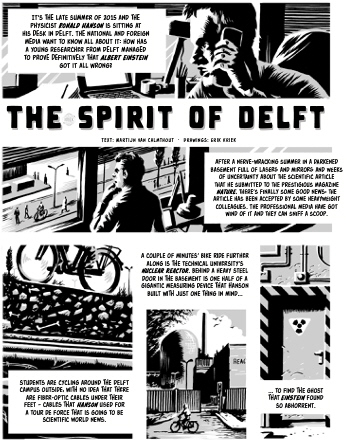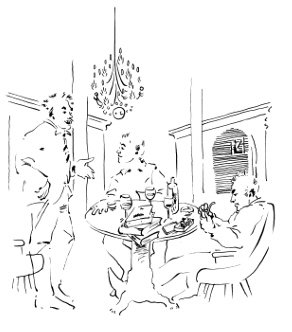(Real Quanta, Martin Van Calmthout, January 2018)
One of the great things about quantum physics is that no one fully understands it, and if you think you do, it’s proof that you don’t. This had led to endless stories, explanations and variations of the same phenomena – all valid – all correct to a certain extent – and all different. In Real Quanta, Martijn Van Calmthout has his own pleasant way of explaining, including the use of a comic book, but mostly through the ruse of meeting Einstein and Bohr for an all-day junket at the Hotel Metropole in Brussels, an old hangout of theirs. It is easy to read, enjoyable to read, and effectively communicates the intricacies. It helps that Calmthout is a quantum physicist himself, as well as a journalist. He has interviewed and worked with the great quantum physicists of our time and is up to the minute on it.

For me (having reviewed so many of these books), it is “simple” to understand. When electrons are part of a greater thing, they behave in the classic way we think of real objects. A 1963 Chevrolet Caprice convertible cannot be in two places at once, cannot be entangled with another such car on the other side of the galaxy, cannot pass through multiple points at the same instant, and cannot be the inverse complement to another Chevrolet Caprice. But a solitary electron, in what is called decoherence, has those properties. It loses them when it joins a greater effort (coherence), such as a molecule, a grain of sand, or the Crab Nebula. The rules change when you join up. Physicists have great difficulty rationalizing this, but in the last few decades they have begun to discover real world applications of it in plants, birds, and our own bodies, making it more acceptable to them.

We now know that plants are quantum users in their process of photosynthesis. They absorb sunlight and separate the electrons, which find out where they’re supposed to go by going in all directions at once. Just like the light experiments where an electron passes through both slits in the screen and hits the barrier behind it. Birds employ it inside their eyes to see magnetic fields. Our noses seem to employ it in deciphering scents. And our lungs use it extract electrons from air. It is thought that our brains use it to process thoughts and acts. There’s nothing strange about it. It’s our own prejudices from what we’re used to seeing and touching that make it seem bizarre.
We need to get over it.
David Wineberg